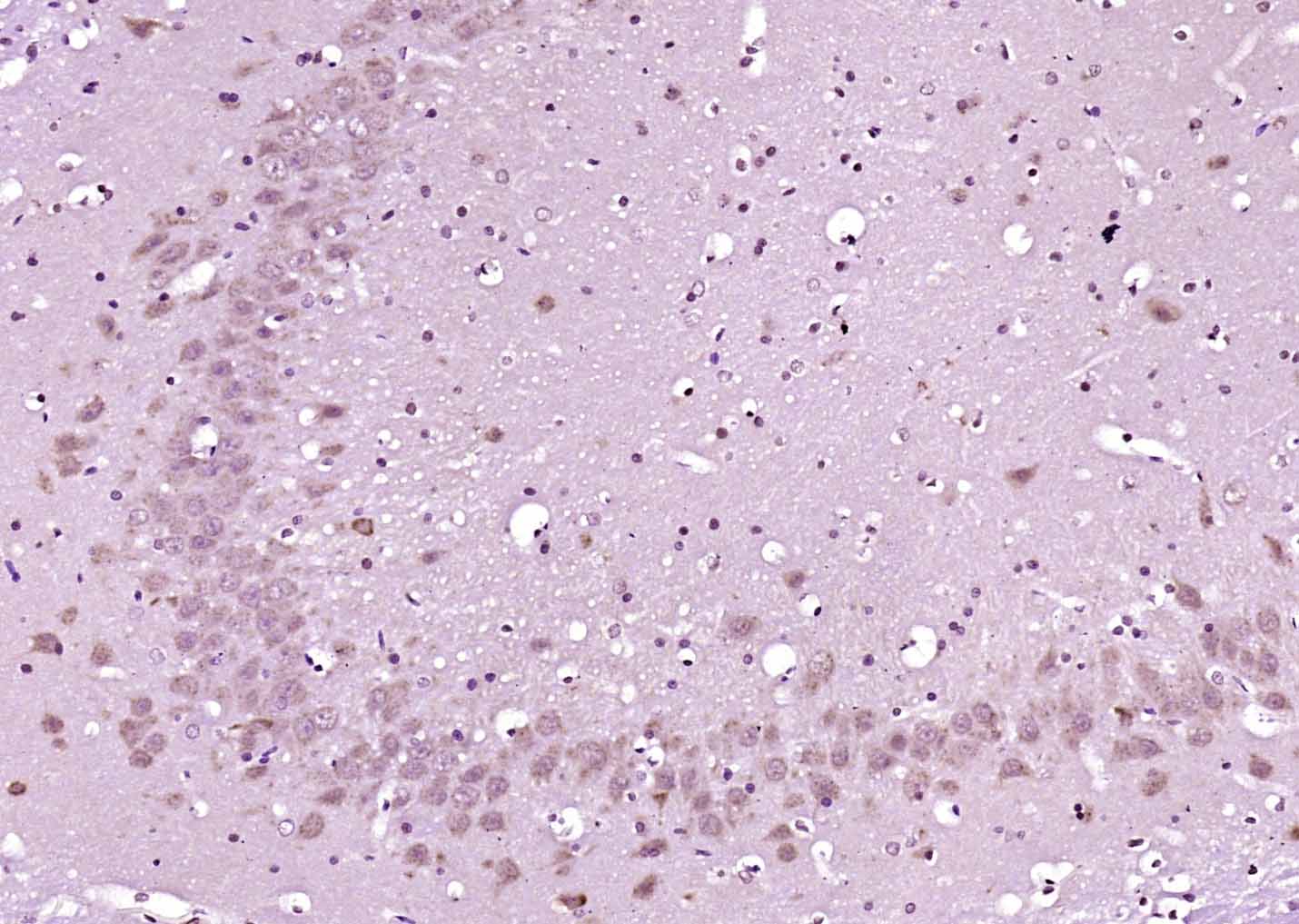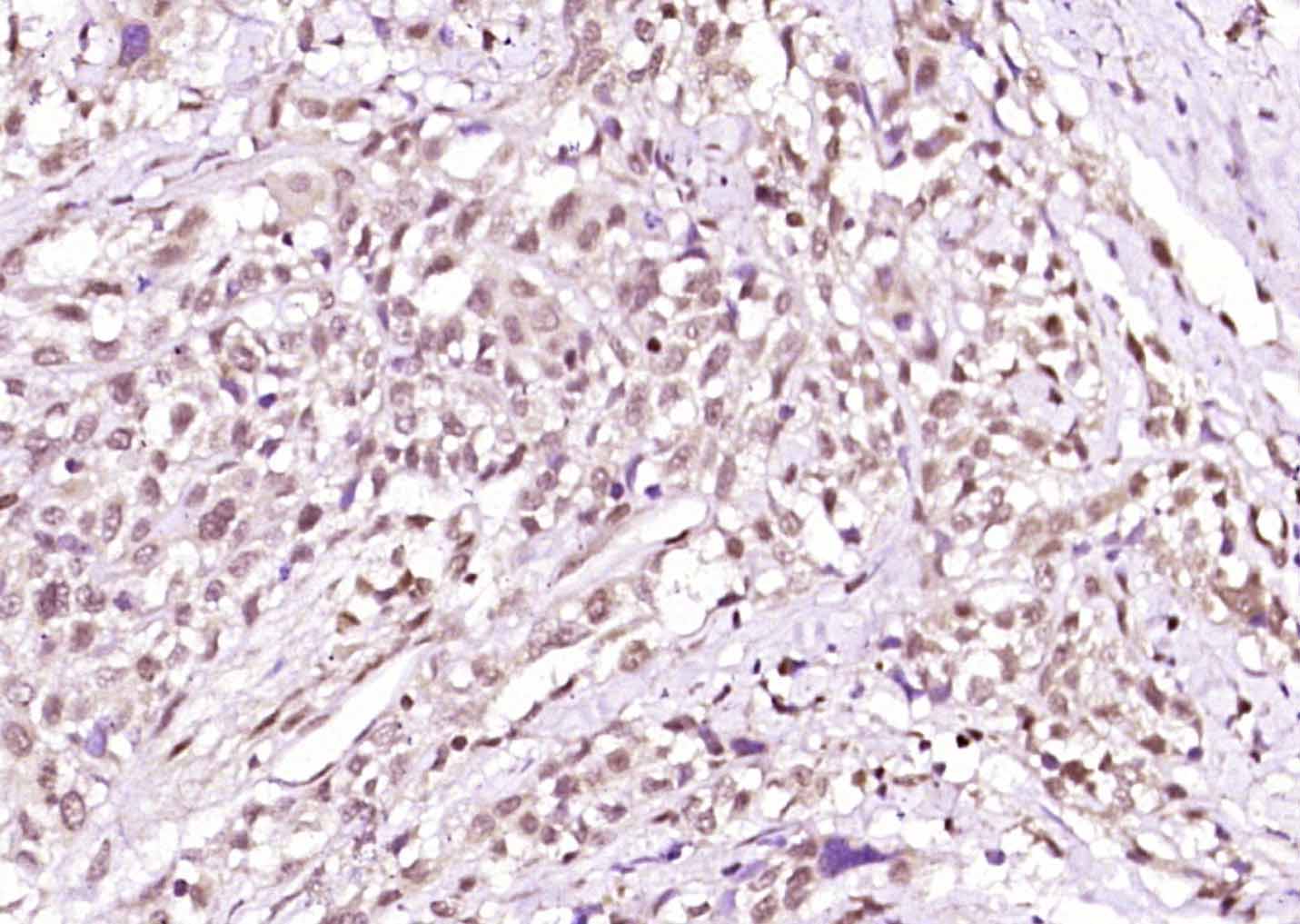
Rabbit Anti-Phospho-PKA alpha + beta (Thr198)antibody
Phospho-PRKACB(Thr198); Phospho-PKA alpha + beta(Thr198); PKA alpha + beta (catalytic subunits) (phospho T198); C alpha; cAMP dependent protein kinase beta catalytic subunit; cAMP dependent protein kinase alpha catalytic subunit; cAMP dependent protein ki
View History [Clear]
Details
Product Name Phospho-PKA alpha + beta (Thr198) Chinese Name 磷酸化蛋白激酶C亚性抗体 Alias Phospho-PRKACB(Thr198); Phospho-PKA alpha + beta(Thr198); PKA alpha + beta (catalytic subunits) (phospho T198); C alpha; cAMP dependent protein kinase beta catalytic subunit; cAMP dependent protein kinase alpha catalytic subunit; cAMP dependent protein kinase catalytic subunit alpha; cAMP dependent protein kinase catalytic subunit beta; Cs; PKA; PKA C; PKA C alpha; PKA C beta; PKACA; PKACB; PRKACA; PRKACB; Protein kinase cAMP dependent catalytic alpha; Protein kinase cAMP dependent catalytic beta; Protein kinase cAMP dependent catalytic beta isoform a; Protein kinase cAMP dependent catalytic beta isoform b; KAPCB_HUMAN; PKA C-beta. literatures Product Type Phosphorylated anti Research Area Tumour immunology Signal transduction transcriptional regulatory factor Kinases and Phosphatases Immunogen Species Rabbit Clonality Polyclonal React Species Human, Rat, (predicted: Mouse, Chicken, Dog, Pig, Cow, ) Applications ELISA=1:5000-10000 IHC-P=1:100-500 IHC-F=1:100-500 ICC=1:100-500 IF=1:100-500 (Paraffin sections need antigen repair)
not yet tested in other applications.
optimal dilutions/concentrations should be determined by the end user.Theoretical molecular weight 40kDa Cellular localization The nucleus cytoplasmic The cell membrane Form Liquid Concentration 1mg/ml immunogen KLH conjugated Synthesised phosphopeptide derived from human PRKACB around the phosphorylation site of Thr198: TW(p-T)LC Lsotype IgG Purification affinity purified by Protein A Buffer Solution 0.01M TBS(pH7.4) with 1% BSA, 0.03% Proclin300 and 50% Glycerol. Storage Shipped at 4℃. Store at -20 °C for one year. Avoid repeated freeze/thaw cycles. Attention This product as supplied is intended for research use only, not for use in human, therapeutic or diagnostic applications. PubMed PubMed Product Detail PRKACA and PRKACB are members of the Ser/Thr protein kinase family and are a catalytic subunit of cAMP-dependent protein kinase. cAMP is a signaling molecule important for a variety of cellular functions. cAMP exerts its effects by activating the cAMP-dependent protein kinase, which transduces the signal through phosphorylation of different target proteins. The inactive kinase holoenzyme is a tetramer composed of two regulatory and two catalytic subunits. cAMP causes the dissociation of the inactive holoenzyme into a dimer of regulatory subunits bound to four cAMP and two free monomeric catalytic subunits.
cAMP is a signaling molecule important for a variety of cellular functions. cAMP exerts its effects by activating the cAMP-dependent protein kinase, which transduces the signal through phosphorylation of different target proteins. The inactive kinase holoenzyme is a tetramer composed of two regulatory and two catalytic subunits. cAMP causes the dissociation of the inactive holoenzyme into a dimer of regulatory subunits bound to four cAMP and two free monomeric catalytic subunits. Four different regulatory subunits and three catalytic subunits have been identified in humans. The protein encoded by this gene is a member of the Ser/Thr protein kinase family and is a catalytic subunit of cAMP-dependent protein kinase. Several alternatively spliced transcript variants encoding distinct isoforms have been observed. [provided by RefSeq, Jun 2011]
Function:
Mediates cAMP-dependent signaling triggered by receptor binding to GPCRs. PKA activation regulates diverse cellular processes such as cell proliferation, the cell cycle, differentiation and regulation of microtubule dynamics, chromatin condensation and decondensation, nuclear envelope disassembly and reassembly, as well as regulation of intracellular transport mechanisms and ion flux. Regulates the abundance of compartmentalized pools of its regulatory subunits through phosphorylation of PJA2 which binds and ubiquitinates these subunits, leading to their subsequent proteolysis.
Subunit:
A number of inactive tetrameric holoenzymes are produced by the combination of homo- or heterodimers of the different regulatory subunits associated with two catalytic subunits. cAMP causes the dissociation of the inactive holoenzyme into a dimer of regulatory subunits bound to four cAMP and two free monomeric catalytic subunits. The cAMP-dependent protein kinase catalytic subunit binds PJA2.
Subcellular Location:
Cytoplasm. Cell membrane. Nucleus. Note=Translocates into the nucleus (monomeric catalytic subunit). The inactive holoenzyme is found in the cytoplasm.
Tissue Specificity:
Isoform 1 is most abundant in the brain, with low level expression in kidney. Isoform 2 is predominantly expressed in thymus, spleen and kidney. Isoform 3 and isoform 4 are only expressed in the brain.
Post-translational modifications:
Asn-3 is partially deaminated to Asp giving rise to 2 major isoelectric variants, called CB and CA respectively.
Similarity:
Belongs to the protein kinase superfamily. AGC Ser/Thr protein kinase family. cAMP subfamily.
Contains 1 AGC-kinase C-terminal domain.
Contains 1 protein kinase domain.
SWISS:
P22694
Gene ID:
5567
Database links:Entrez Gene: 5567 Human
Entrez Gene: 18749 Mouse
Omim: 601639 Human
SwissProt: P22694 Human
SwissProt: P68181 Mouse
Unigene: 631630 Human
Product Picture
Bought notes(bought amounts latest0)
No one bought this product
User Comment(Total0User Comment Num)
- No comment




 +86 571 56623320
+86 571 56623320
 +86 18668110335
+86 18668110335

